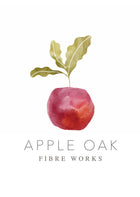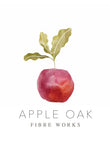Natural Dyer's Academy ~ Module 7 Purple

One of my favourite colours ~ Purple. This was a lovely module to write, relatively short and yet so full of colour. There are three ways how I create colourfast purple: Using an actual purple dye like cochineal, overdying blues with madder or cochineal reds, or using iron and shifting red colourants to purple. As is so often the case, purple coloured plants like berries or hibiscus will only create temporary colours and will fade to browns, greys or light pinks. Purple is a rare colour to bee seen in nature and maybe that is why it tends to be an all time favourite.
I think it pisses god off, if you walk by the color purple in a field somewhere and don't notice it. "The Color Purple" by Alice Walker
_____________________________________________________
Apart from covering the many ways of how to make purple, we will also look at history, what has been the most prized purple and last, but not least, how to create strong purples on cellulose.

Tyrian Purple (made from different sources of mollusks)
- Sources & history of purple
The story starts in 1800BC, Greek mythology and story telling and finishing In Ireland in 1946, on the island of Inishkea North, Co. Mayo.
Using Madder, Cochineal, Indigo & iron to produce numerable shades pink and purple.
- Creating Purples in your Studio
The recipes include all of the above and how to create these colours on protein and cellulose fibres. It will also answer the question why we can't use acid dyes with Aluminium acetate recipes.
If you like to join next year's course, you can sign up to our specific course newsletter here: A professional one year online course in Natural Dyeing (email sign up – AppleOak FibreWorks
You are also welcome to join our Natural Dyers Academy platform! Here you will find a buzzing community of natural dyers, makers and more. https://the-natural-dyers-academy.mn.co/



Hinterlassen Sie einen Kommentar